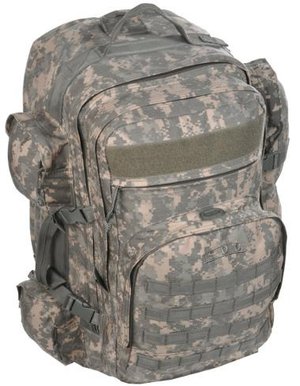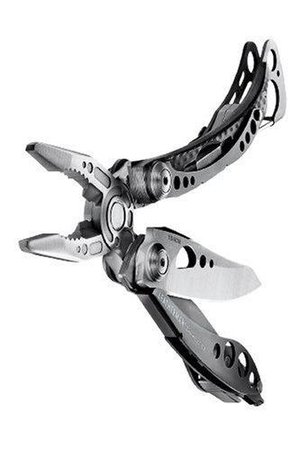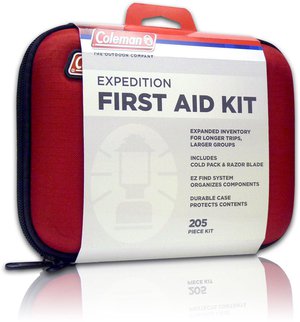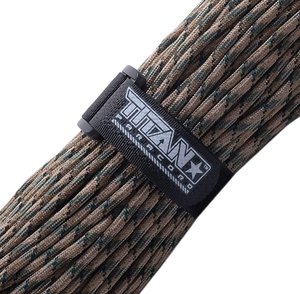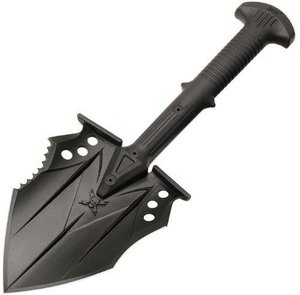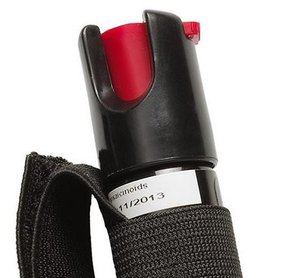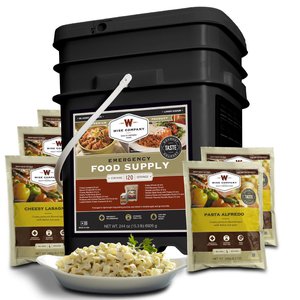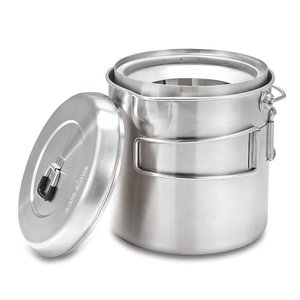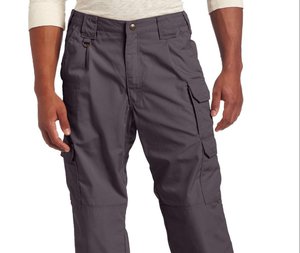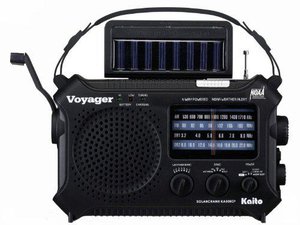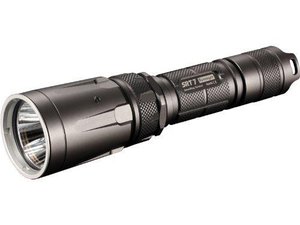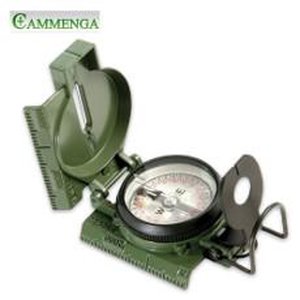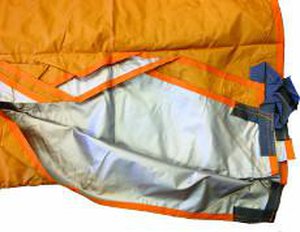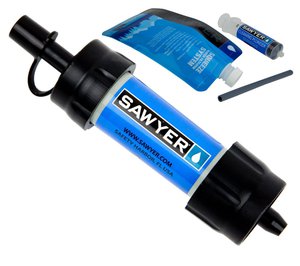What To Pack In Your Go Bag
Updated
Overview
Staying safe in an emergency is a concern that does not always top the list of busy families, but it is of the utmost importance for every individual to be prepared for the worst. Planning ahead includes knowing how to handle emergency situations, but having the right tools to get through anything is the most important part of surviving. Creating a checklist and putting together a kit based on this list helps put those essential tools in the hands of individuals caught in an unexpected crisis. Understanding the purpose of each item to be included in the bag is the first step to creating a useful kit.
What Is a Bug Out Bag?
A bug out bag (BOB) is specifically designed to help a person get through an emergency evacuation situation. Supplies to sustain a person over a 72-hour period are included in the bag. It is important to note that these packs are not intended to include enough supplies for long-term survival in a crisis. These bags are used during the initial period following an evacuation in order to help a person survive until they can receive assistance from a disaster relief organization.
BOBs are also useful when a natural disaster cuts a person off from resources that are normally available inside their home. For example, these bug out kits can be used after a severe storm that cuts off power and access to clean water for several days.
Types of Bags
The type of bag used should be lightweight and able to carry equipment without sustaining damage. There are a few types of bags that can be used for this purpose.
Bug out backpacks are the best choice when it comes to building a kit. These versatile bags offer the durability, size and portability needed. There are plenty of options to chose from, so people who opt for a backpack can find a variety that fits their needs. Anglers vests are not big on storage, but the fact that these bags are worn as clothing makes it easy to carry them long distances. These bags are ideal in situations that leave survivors without access to a car or established roads. Duffle bags with a lot of compartments can be used, but the difficulty related to transporting these bags is a significant disadvantage. Duffle bags should only be used for bags that are kept in the home. A brand of bag we always recommend is a SOC Bag, great quality, and long lasting.
Any type of bag should be covered with a rain shield in adverse weather. Be sure to purchase a shield that is appropriately sized to avoid having the shield drag on the ground. Tarps that are cut to size can be used.
Now that survivors have a better idea of how to choose a bag to build their kit, it is important for individuals to study the purpose of each item on the checklist. A good place to start is look at the contents of your Get Home Bag and increase the longevity through water, food and tools.
Tools
Tools are an essential addition to the bag that will enable a person to survive while they wait for rescue workers to reach them. These tools can be used in all aspects of survival to extend the amount of time that a person can wait while relying on supplies from their gear.
A utility knife is a must because of its various uses and small size. Choose a knife that is specifically intended for survival situations. Utility knives with attachments including a file, screwdriver, scissors, pen and flashlight are most helpful. Some utility knives are even able to hold a small USB drive to allow people to carry important documents with them in a digital format.
A first aid kit can be used for minor scrapes to prevent infection. Supplies included in the first aid kit can also help people who are more seriously injured stay stable until medical assistance is available. Basic first aid kit supplies include sterile gloves, antibiotic wipes, ointment, decontaminate, bandages of various sizes and a thermometer. Over-the-counter medications including pain relievers, antacids, laxatives and anti-diarrhea pills should also be included. Supplies that may need to be used after an injury is sustained include scissors, medical tape and tweezers.
Headlamps allow people to see when it is overcast or dark outside. It may be necessary to keep moving after dark, so headlamps are essential to ensure that people can see where they are going to avoid accidents and find their way.
Strong rope has multiple uses during an emergency. Rope can be used in the setup of a shelter. Clothing can be dried on a rope if it becomes soaked in adverse weather conditions, and rope that is tied high in a tree can be used to keep a bag off of the ground and away from bears. Rope may even be needed to help people climb out of crevices.
Sewing kits are very small and include essential items for survival. Being able to access sewing equipment enables a survival to stitch up clothing and holes in tarps or tents. Any holes noticed on the outside or interior of a duffle can also be sewn to avoid allowing important items to fall out of the bag. Injuries that require stitches could even be temporarily stitched with sewing supplies until professional medical care can be accessed.
Duct tape is a versatile tool that can be used to repair items. Duct tape can even be used as a makeshift shelter, stretcher or as clothing in an emergency. At least one roll is needed to complete a kit, and it is important to opt for a well-known, high-quality brand that will stay durable in any situation.
A small plastic shovel can also be a useful tool in an emergency. Digging a small trench can allow for a fire to be started in a sheltered area for the highest possibility of success. Fire starters that can be used in any weather are necessary to ensure that food can be cooked if a stove is not available. Keeping a fire going may make the difference when it comes to surviving in cold temperatures or wet weather. Tinder including dryer lint, cotton balls soaked in petroleum jelly and wood shavings can help get a fire started quickly.
Protection
There is a possibility that people who are evacuating an area will find themselves facing dangerous animals while walking through the woods or searching through a neighborhood with unfriendly animals that were left behind. Carrying some form of protection against attacks is essential to avoid being bitten or badly hurt. Medical care may be difficult to find during an emergency situation, so avoiding injury is best.
Firearms can be used for protection, and a .22 caliber rifle is typically recommended for survival. However, keep in mind that a rifle will not fit in the bag, and the bulk must be accounted for when a person is determining how much they can carry while leaving an area. Take ammo into consideration as well, and be sure to be experienced with the firearm well before an emergency arises. Practicing at a fire range before a firearm needs to be used for survival is ideal.
It is best to avoid using a firearm whenever possible. People who are concerned about getting into confrontations with other survivors should include pepper spray in their gear to deter others without causing lasting harm. Stun guns provide another option for non-lethal protection.
Folding survival knives are ideal for protection against animals. Knives can be used if ammo is not available for a firearm, and people who need to stay protected against small animals that may carry dangerous diseases can utilize knives to their advantage without making a lot of noise.
Food
Having enough to eat during a crisis is essential to keep up energy in case a person is required to walk, run or signal for help. Relying on foraging or hunting for food is not reasonable within the first 72 hours of a crisis. The types of foods that are included in a BOB should be practical in terms of preparation and transportation. It is not reasonable to take up a lot of room with food, but it may be tempting to stuff the bag with edible items.
Stick with a few staples that are lightweight, compact and nutrient-rich. These items should be easy to prepare and have a long shelf life. Examples of foods that can be put into a 72-Hour Kit include Meals, Ready-to-Eat (MREs), canned meat, canned stews and energy bars. While the bag will include tools, opt for cans with pop-top lids when possible to make it easy to open these food items as quickly as possible. Other easy foods that can be quickly prepared with minimal effort include dry oatmeal packets and trail mix.
Cooking supplies are necessary to ensure that food can be eaten. Small, portable cooking stoves allow people to heat food up for safety. Small plates and utensils that are made of lightweight titanium are best. Cookware will be needed if food needs to be heated, but avoid packing bulky or awkward pots and pans. Stick with one small pan made of a light-weight metal.
Clothing
Your bag should contain clothing that prepares you for any situation. Layers are ideal for reaching this goal without requiring a person to pack several different outfits for each possibility.
Base layers include undergarments that are able to keep a person protected from harsh weather conditions. Lightweight, breathable materials that wick moisture away from the skin of the wearer are ideal. Thermal undergarments can keep survivors warm when the temperatures drop at night, and these clothing items have the added bonus of being compact.
Intermediate layers include basic clothing items like shirts and pants. Long pants are always recommended because of the possibility that a person will have to walk through overgrown areas. Pants that have many pockets allow a survivor to carry essential equipment with them, and pockets are ideal in case a person is unable to get to their bag after evacuating. Long-sleeve shirts are also ideal for protection against brush and sunlight, but a light-colored shirt that does not add bulk is best to avoid overheating.
Outer layers are used to protect the wearer from the cold and the sun. Hats, gloves, scarves, jackets and coats fall into this category. Heavy-duty gloves protect survivors when they are using firearms or searching through brush. Ponchos can also be included in case of rain.
Communication
Getting in touch with disaster relief organizations or others during an emergency can help survivors get the help that they need to make it through the situation. Communication equipment plays a key role in ensuring the long-term safety of a survivor.
A cellphone is worth taking on the trip because of the small amount of space that will be taken up, but cell service is unlikely to be reliable in an emergency. Other equipment that does not rely on electricity or signals is good to go.
Whistles are ideal for signaling other members of a party if people are separated, and whistles can also be used to signal rescue workers if a person becomes trapped while trying to evacuate. Wearing a whistle on a lanyard is the best solution to ensure that a means of signaling others is always available.
Tactical flashlights can be used to signal long distances. Two-way radios are more reliable than cell phones when it comes to contacting a particular person. Hand-cranked, portable radios can be used to receive communications about how to find help, and the fact that these radios are manually powered means that they will not be a drain on resources.
Small pieces of equipment that can help people communicate to get the help that they need during an emergency are often overlooked, but these tools can make the difference in some situations. Writing instruments including pens, pencils and paper can be used to leave notes for rescue workers or family members. Signal mirrors can help draw the attention of others during daylight.
Equipment is only one part of the communications category. Having a plan for getting in touch with family members in an emergency is also important. A laminated copy of this plan should be included to ensure that individuals remember how to reach family members if they are not together when disaster strikes.
Navigation
Depending on digital navigation methods is not a reliable option in a crisis. Survivors need to have navigation tools in the bag in order to find their way. Compasses are an obvious choice for navigation, but some compasses are poor quality and do not work properly. Choosing a compass with positive reviews and testing it on a regular basis is recommended.
Maps are essential for navigation. People who are preparing for emergencies near their home should purchase maps for the surrounding area. Travelers who may run into an emergency situation should plan ahead by buying maps for any area they will be in during the trip.
It is also recommended that survivors mark trees or other objects along the way when they are moving away from their home or other base. This allows individuals to find their way back without difficulty.
Remember that preparing to use these tools is important before an emergency occurs. These navigation tools are useless if a survivor has not properly researched how to use them and practiced to ensure that they are understanding instructions.
Shelter
The adverse weather conditions that could cause an emergency situation or result from such an event can pose risks to survivors. Including some type of shelter helps protect survivors against these conditions.
Tarps offer a simple solution to the problem of carrying a shelter in a bag. Tarps tend to be lightweight and easy to manipulate for the purpose of building a shelter. Other viable options that fit nicely into the bag include one-man tents and bivy sacks.
Including a form of shelter often takes up a lot of space. Compression bags can be used to shrink the size of shelters, clothing and other bulky items in order to allow them to fit into a bag with other essential supplies.
Water
Water poses a challenge because of the bulk added to bags when water is included. Since water is absolutely essential for survival, the best solution to the problem is to include a water filter so that any water source can be made clean enough to be drinkable. Anyone who has a bag should understand how to use their particular filter before an emergency strikes. Opting for filters that are small is best to avoid filling up space in the bag.
A full canteen with a cup in the lid is also essential. This gives a survivor immediate access to much-needed water while other water sources are being located. Cups help keep filtered water from being spilled or leaked.
Personal Care and Hygiene
Practicing good hygiene during an emergency can help survivors avoid contracting serious illnesses that may put them at risk. However, it is important for individuals to avoid bringing full-size versions of their preferred personal care items. The aim is not to make a person feel like they are at home going through their normal routine. Getting clean enough to prevent illness is the only goal when your kit is being assembled, so sticking with the basics is the best solution to achieve the desired goal without taking up too much space.
Include travel-sized shampoo, soap and toothpaste in the bag. Dental floss, toilet paper, a washcloth and a toothbrush should also be included. Dish soap is a must to keep eating utensils clean in order to avoid intestinal bugs.
Small bottles of hand sanitizer are ideal for times when clean water for washing hands is not available. Basic feminine products can also help promote hygiene. Remember that the kit is only intended to sustain a person for a 72-hour time period, so focus on packing hygiene supplies that will last for three days.
It is possible for full-sized personal care items to be packed in a car in case of emergency, but remember that these items will only be accessible if evacuation by vehicle is possible. Do not depend upon this separate bag for staying clean. Only Keep the bare essentials.
Fuel
Equipment to fuel the tools that are included in the bag is a must to ensure that these tools work properly. Forgetting an energy source is one of the worst mistakes that a survivor can make.
Cooking stoves often use butane as a fuel source, but small, portable stoves that are intended to be kept in a backpack may use fuel tablets. These stoves and the tablets that fuel them are small, lightweight and convenient for storage and transportation in a bag.
Lanterns may take batteries or use liquid fuel. Be aware of which type of lantern is in the pack when preparing fuel sources. Fuels that are used in lanterns include propane, kerosene and gasoline. Some lanterns can also run on proprietary fuel blends made by the lantern manufacturer.
Batteries can take up a lot of space if entire packs are kept in a bag, but including a few of various kinds of batteries helps ensure that backup power sources are available. Make sure that all possible types of batteries that may be needed to fuel equipment are included.
Small, hand-cranked generators can be used to charge electronics without requiring the use of batteries. These generators can typically be used to charge cell phones, GPS devices and flashlights to help people keep in touch with rescue workers and find their way to help during an emergency.
Other Essentials
Some survival supplies do not fit neatly into a category when a checklist is being compiled. For example, supplies that are only needed for certain individuals may not fit into these categories. Prescription medications that cannot be missed would be included.
Cash is also a supply that could be beneficial in an emergency situation. People who are evacuating an area may not know how long it will be before they can return home, and being able to pay for food and shelter after the supplies run out is a must. Gold and silver can also be stashed in the bag in case of a severe, widespread emergency that lasts a long time.
Being prepared for the worst starts with the assembly of a well-stocked bug out bag, for more ideas of what is needed check this article on essential items. The portable nature of the bag means that everything should be chosen carefully to avoid wasting space or making the bag too heavy to carry. Each of the items listed above is essential to survival during the first 72 hours following an emergency situation, but it is important for individuals to assess their needs and capabilities before choosing any piece of equipment or accessory to include in the bag.
Remember that each member of the family should have their own bag, and each bag should be assembled according to the individual needs of the person who will be carrying the bag. For example, bags for children will need to be scaled down to ensure that they can carry their supplies.
Featured Articles
-

SOC Bags
SOC Bags are built to last. No matter what you are looking for SOC has you covered. Here is a review of the top bags to choose from.
-

What To Pack In Your Go Bag
72 Hour Bags are designed to keep you safe and secure for 72 hours in case there is a disaster. Find out what should be in your bag.
-

Bug Out Bags For Sale
There are many bug out bags for sale, but you need to make sure you get the right one for you. In this article we look at a few of the most popular.
Recent Articles
-

Get Home Bag
Make sure you can get home in an emergency situation with a get home bag. A get home bag is specifically designed with the gear you will need to make it home.
-

Essential Bug Out Bag Items
Just the essentials. Make sure your survival pack contains these essential bug out bag items, otherwise you may be in trouble.
-

Prepper Stocking Stuffers
Get some great stocking stuffer ideas for that prepper, survivalist, or grown-up boy scout in your life!
-

SOC Bug Out Bags
Sandpiper of California (SOC) produces high quality backpacks, find out why they may produce the best bug out bags available.
-

Prepping Definitions
Hi everybody! It’s that time again, so grab some popcorn and settle in – this week’s SignalSurvival blog post is comin’ at ya, hot and fresh off the presses. Actually, before we get into the meat and potatoes of this week’s entry, here’s a little secret for you all: While researching and writing these things … Continued
-

End of the World Balance Sheet
Did you guys hear about that PrepperCon in Utah last week? Preppers and survivalists from all over have hopped on the Comic Con bandwagon! They had exhibits on everything from tactical seat covers to personal Humvees, and the cast of AMC’s hit show THE WALKING DEAD made an appearance! How cool is that? People are … Continued
-

Bug Out Kits
Are you someone who wants a bug out bag but doesn't know what should go in it? Don't worry, there are full bug out kits to get you started.
-

Survival Weapons
Survival weapons are used for food, safety and as a utility tool. This article is all about the options available for your bugout bag.
